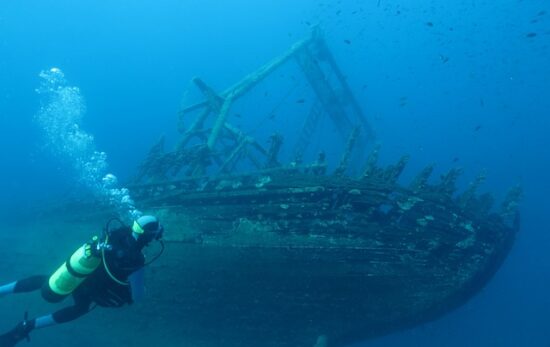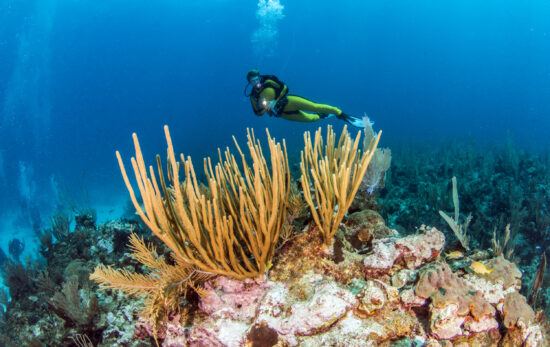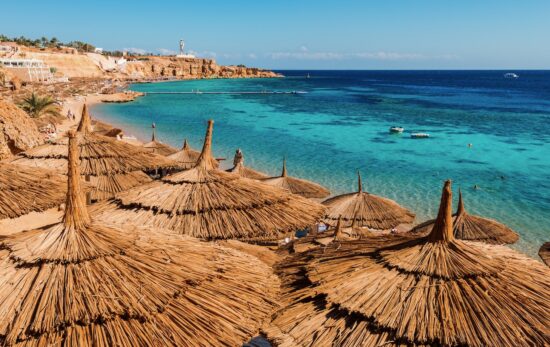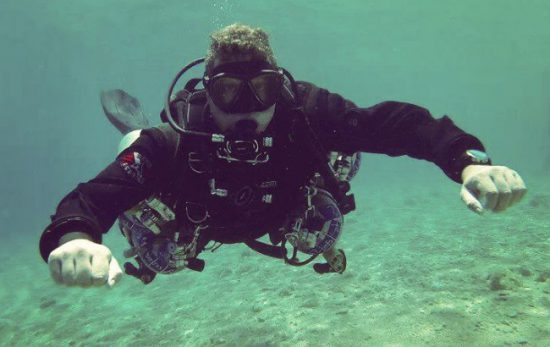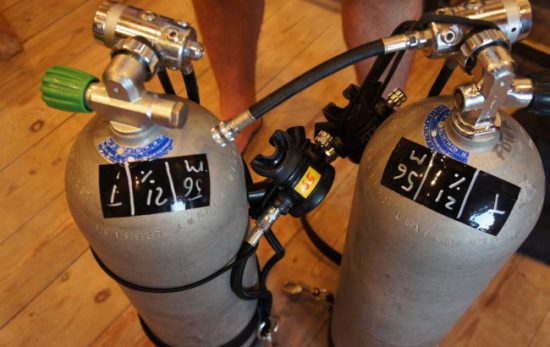Perched in a Bedouin seating area in a beachfront cafe in Eel Garden, one of Dahab’s famous dive sites, I can see a group of divers heading into the turquoise Red Sea, with no reminder of the Western world in sight.
The conditions are ideal for this sandy-bottom dive site today – low winds and water temperature of around 24 degrees Celsius (75 degrees Fahrenheit). The group are heading into the coral ridge entrance, customers in 3-millimetre and 5-millimetre suits, and the instructor in a semi-dry suit.
Sinai often remains peaceful throughout the year – no matter what may be occurring elsewhere in the world. It provides a little asylum for locals and expats-turned-locals, myself included, where we can hide away from the “real” world. For those wanting to dive in Dahab and Sharm, I highly encourage you to travel here now.
Those living here will often beam from the solace they find in Dahab and Sharm, where diving, freediving, beachfront yoga, rooftop gyms and groovy nightlife converge. And that’s not to mention the rise of hotspots of delicious Western cuisine and specialty coffee shops, amongst the beeping horns of pickup trucks and the occasional passing herd of camels. It’s not a destination to miss out on.
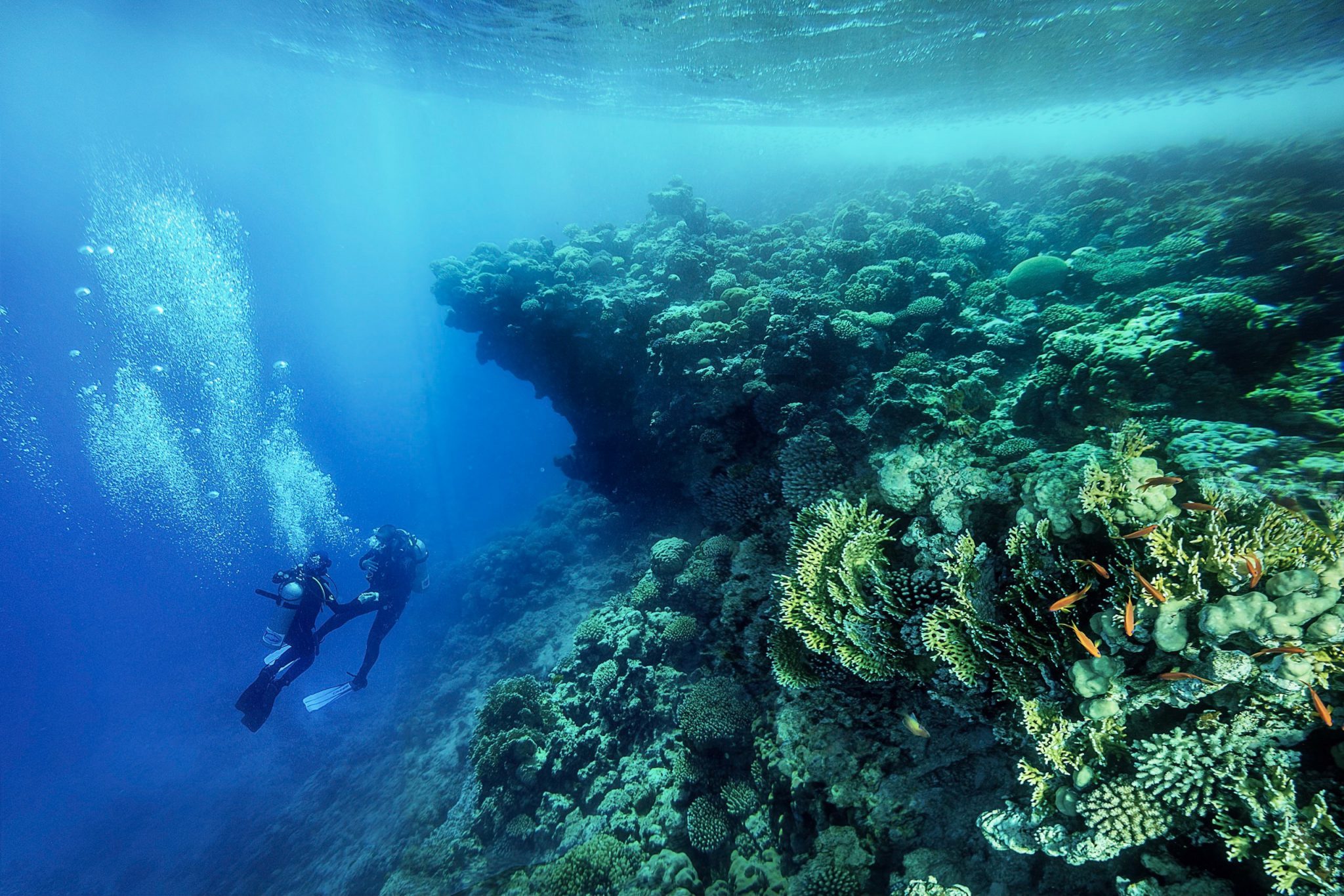
Dahab
Dahab, the place I call home, is a small coastal town located a one-hour drive north of Sharm el-Sheikh. Its name translates to “gold” in Arabic, and Dahab was once a small fishing village populated with Bedouins. Today, it’s classed as one of Egypt’s meccas of diving. Imagine the laid-back vibe of Bali, meets walkable streets, exceptional diving, and Middle Eastern charm. Dahab is all that and more.
Compared to Sharm, Dahab is the common choice for groups of mixed divers and non-divers, plus solo travellers. If you ask a foreigner how they ended up living here, more often than not, they’ll respond with something along the lines of, “I came here for a few months…. that was three years ago!” Dahab has a magical charm to it that’s hard not to fall in love with.
Here you’ll find easy-entry shore dives often in front of beachfront casual restaurants where you’ll spend your surface intervals.
Lighthouse Reef
Typically, your first dive in Dahab will be Lighthouse Reef. After kitting up at one of the local dive centers, you’ll walk just a few meters/feet to you enter the water.
This is easy shore entry leads to a reef with a sandy entrance just before a seagrass drop-off. Locals call this seagrass drop-off the buoyancy park and the underwater museum, thanks to the array of metal shapes where divers can practice buoyancy and the huge elephant statue at just under 30 meters (100 feet).
To the left, a reef wall extends before reaching the saddle. The current strengthens here, so it’s usually Advanced Open Water Divers and above only that can pass the saddle to reach the gorgonian-fan-filled “playground”.
Year-round, you’re likely to spot unicorn fish, clownfish, boxfish and, if you’re lucky, stonefish. This winter, in particular, we’ve lucked out with unusual nudibranchs (one of my favorite sightings) alongside numerous octopuses.
Almost every dive at this shore-entry site includes an encounter with the resident turtle and seahorses on the acres of lush seagrass.
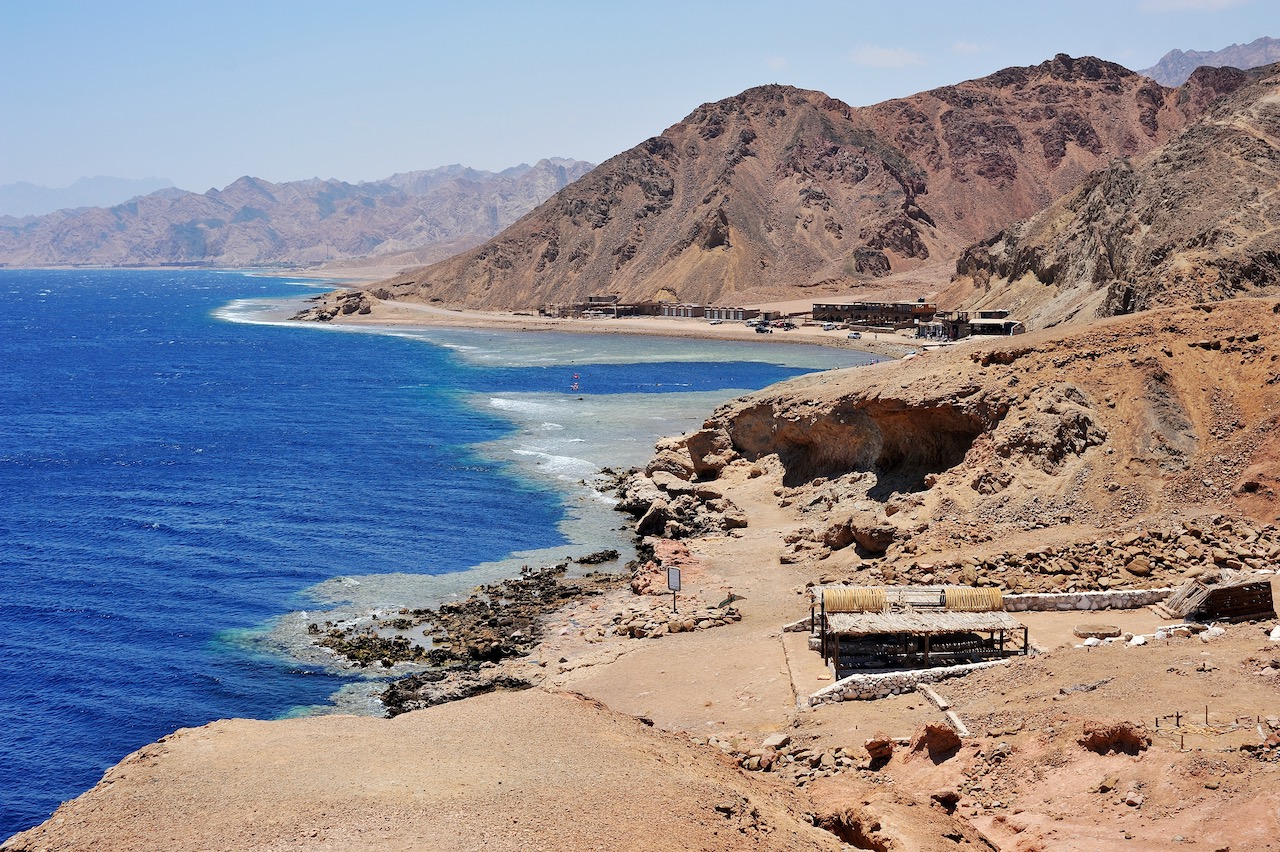
Canyon and Blue Hole
Heading about 6 miles (10 kilometres) north in a pickup truck from Lighthouse, you’ll reach Dahab’s famous Canyon (where I cried from the shock of its beauty when I first dived there!), and just after that, Blue Hole. Both are conveniently shore entry dives.
Although the winter water may not be as crystal clear as the summer months, the Red Sea certainly makes up for it with a cornucopia of glassfish and barracuda parading the colorful reef from Bells, an enclosed chimney within the reef extending down to 25 meters (82 feet), to Blue Hole.
After descending the Bells, the gentle current makes this a drift dive along the right-hand-side reef wall paired with endless deep blue on your left. A group of friends diving the Blue Hole at the end of November beamed of the 30-meter (100 feet) visibility and school life coming back in abundance to populate the wall of coral reef.
Upon reaching the Blue Hole itself and beginning to ascend, you’ll come across the 7-meter (22 feet) saddle populated with brightly colored corals and smaller schools of fish.
After entering this sinkhole, you may spot the infamous arch laying at 65 meters (213 feet) that tec divers and freedivers venture down to (not suitable for recreational divers). To finish the dive, it’s a short journey directly across the sinkhole. It’s breathtaking to be surrounded by endless circular deep blue.
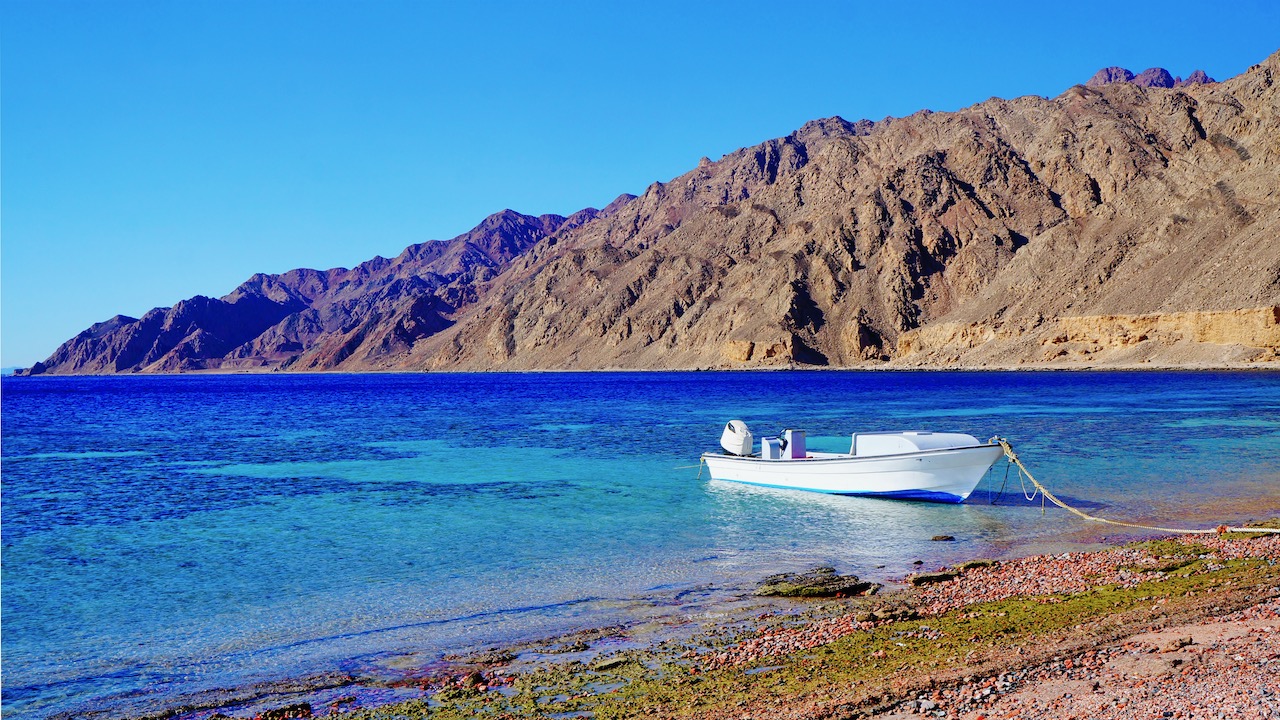
Ras Abu Galum
A short boat ride, or journey by camel if you want a real “Dahabian” experience, 9 miles (15km) north of Dahab, and you’ll arrive at Ras Abu Galum. The beauty of Abu Galum is its secludedness. Here you won’t find the large groups of tourists that hang out in central Dahab. The beach itself offers a laid-back lifestyle, but divers flock here to see the juvenile triggerfish and schools of needlefish in the cooler winter months.
Due to the lower tourism levels at Abu Galum, the group I spoke to said that it “hasn’t changed in 20 years” with dive sites appearing untouched by humanity. The exception is new development of camps and actual huts to sleep in overnight – just remember to bring a warm blanket for the nighttime winds!
This is the epitome of diving in South Sinai at the moment. The locals might find the water a little chilly during the winter months, while those escaping the cold European winters find Dahab to be the perfect safe haven. On the other hand, summers are bustling here, allowing divers to bathe in the warm Red Sea in swimsuits or shorties, and bake in the 40°C (104.0 °F) sun on shore.
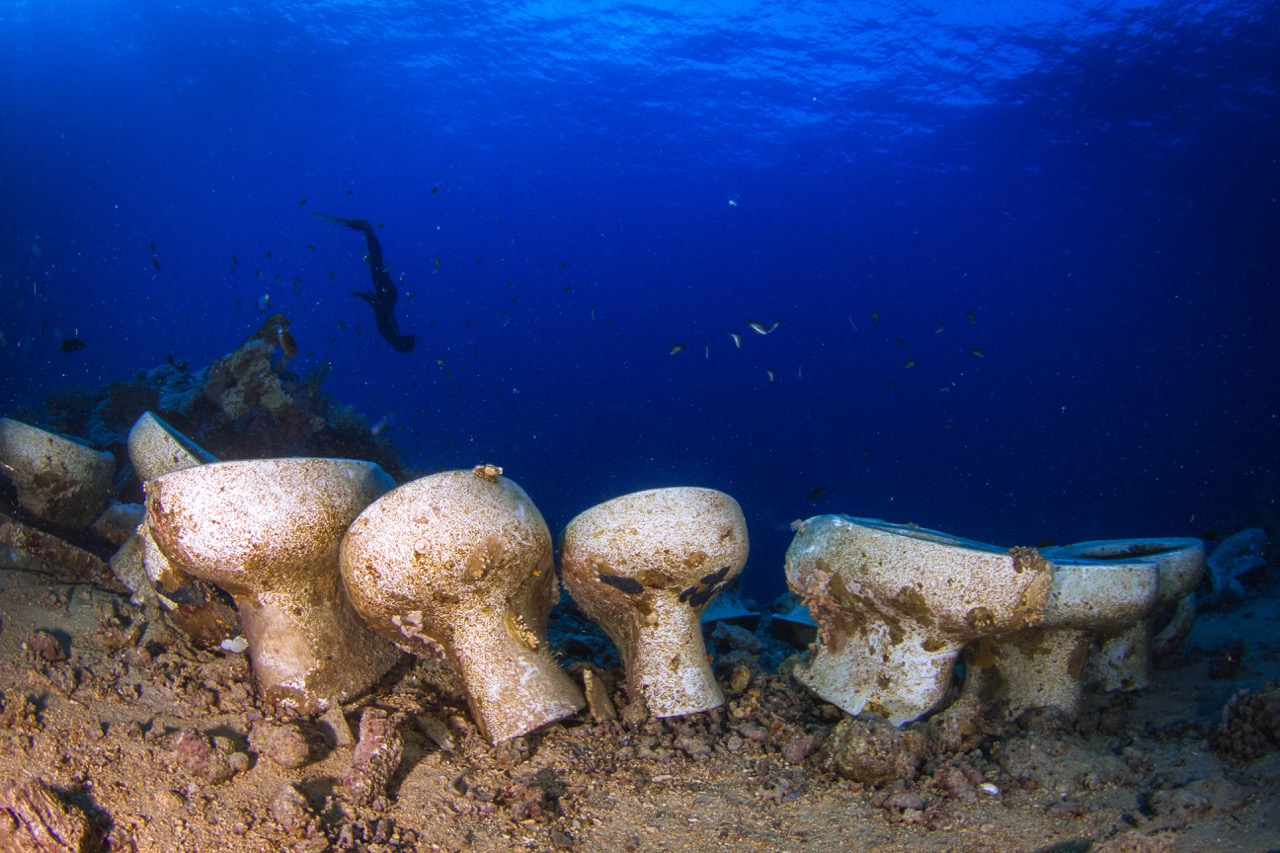
Sharm el-Sheikh
Heading back down to the south, we come to Sharm el-Sheikh (where you’ll find area’s largest airport). This is one of Egypt’s ideal locations for boat diving, and you’ll certainly find a wide variety of underwater landscapes in this area. Furthermore, Sharm offers a more polished appeal, as opposed to Dahab’s bohemian vibe.
With an impressive collection of famous wrecks and reefs, diving in Sharm truly provides an escape. If you’re unsure of which time of year to visit, take note that the water temperatures in Sharm el-Sheikh can be a little warmer than Dahab. In November through to March (the winter season), water temps stick around 24 to 26 Celsius (75 to 78 degrees Fahrenheit). During the warmer season (April to September/October), the water can reach a high of 28°C (82°F)!
Straits of Tiran
Stretching 30 kilometers (18 miles), the Straits of Tiran are the passageways that separate the Gulf of Aqaba from the Red Sea. Here you’ll find some of Egypt’s best dives reachable by day yachts from dive resorts or liveaboard trips.
Starting from the north, the four famous pinnacles bob out of the water, each named after British cartographers: Gordon, Woodhouse, Thomas and Jackson.
My personal favorite is Thomas Reef as a drift dive (due to the strong northern and southern-end currents). One of the highlights of this dive is the array of Gorgonian fans on the seabed and common sightings of sharks on the sandy banks.
Thomas Canyon, laying around 35 meters (114 feet) and extending to 90 meters (295 feet), surpasses the size of Dahab’s Canyon dive site and is a better choice for thrill-seeking divers. Tec divers are engrossed with this narrow-arch-entry crafted from fallen boulders.
It’s beyond exciting that for most European divers both direct flights and flights with just a short layover in Istanbul can get you to dive sites as breathtaking as Tiran.
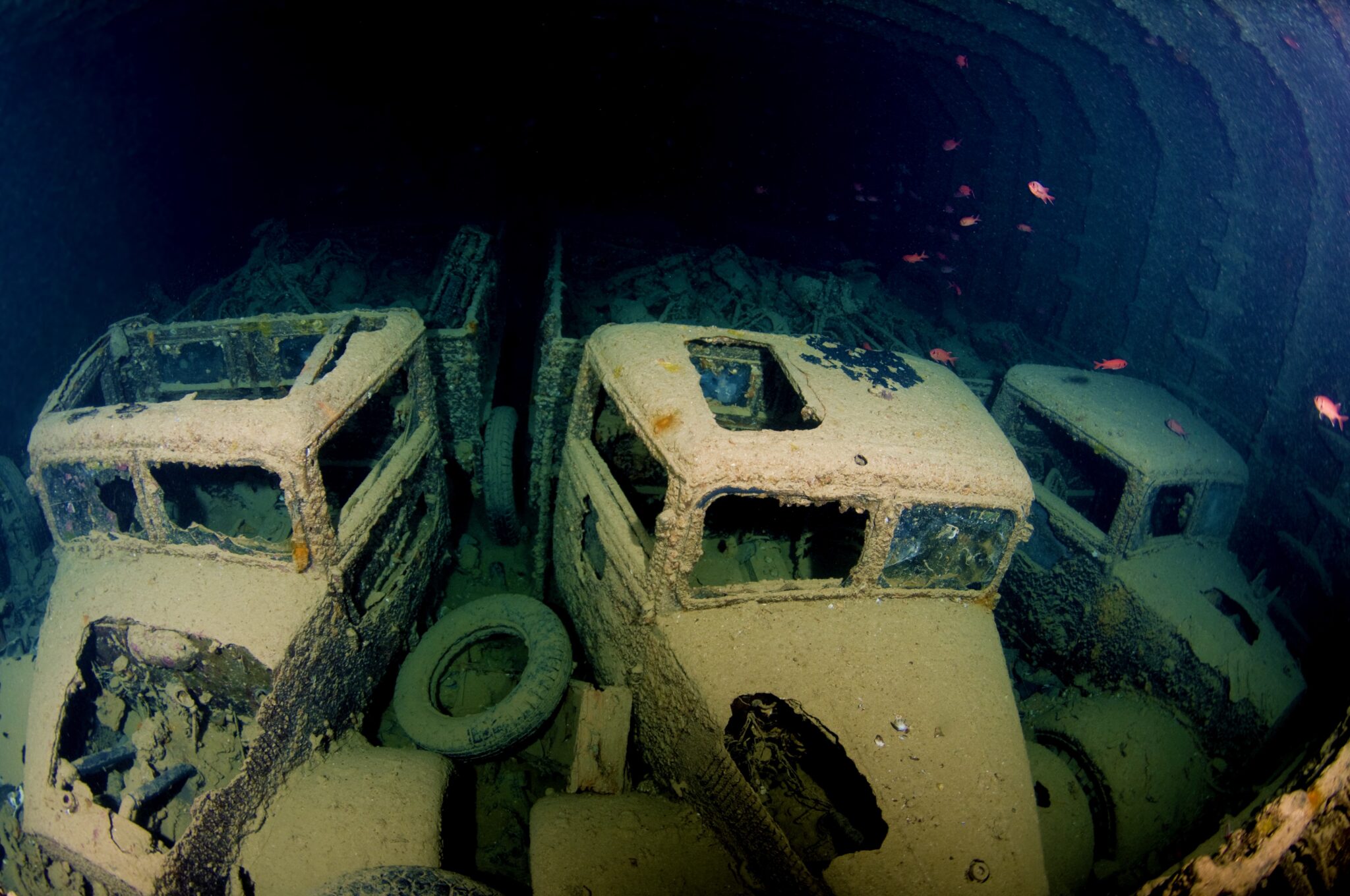
Thistlegorm
As the largest wreck in the Red Sea, the Thistlegorm is an unmissable dive in Egypt. Since many countries have opened up to Egypt in the last few years, liveaboards here are filling up with diving tourists headed to this wreck.
The WWII wreck can be reached from Sharm or Hurghada, but the four to five-hour boat journey means most divers prefer to enjoy this dive from a liveaboard for ease. This also ensures you’ll be there early as one of the first groups in the water and stick around for at least a day to dive into the different areas of the wreck.
After a rope descent is used to reach the wreck at around 30 meters (100 feet), you’ll see the split hull of the cargo ship, with each part usually explored over two or three immersions.
Arguably one of the best wrecks in the world, the Thistlegorm is particularly exciting due to the automobiles preserved underwater in its cargo hold. Expect to encounter army trucks, jeeps, tanks, and motorbikes. You can enter the ship, where you might see snoozing turtles and pass through mysterious dimmed passageways.
This is an advanced-level dive that only experienced, current-confident divers will be suited to. It’s a true “I can’t believe I’m here” moment that you must experience in the Red Sea.
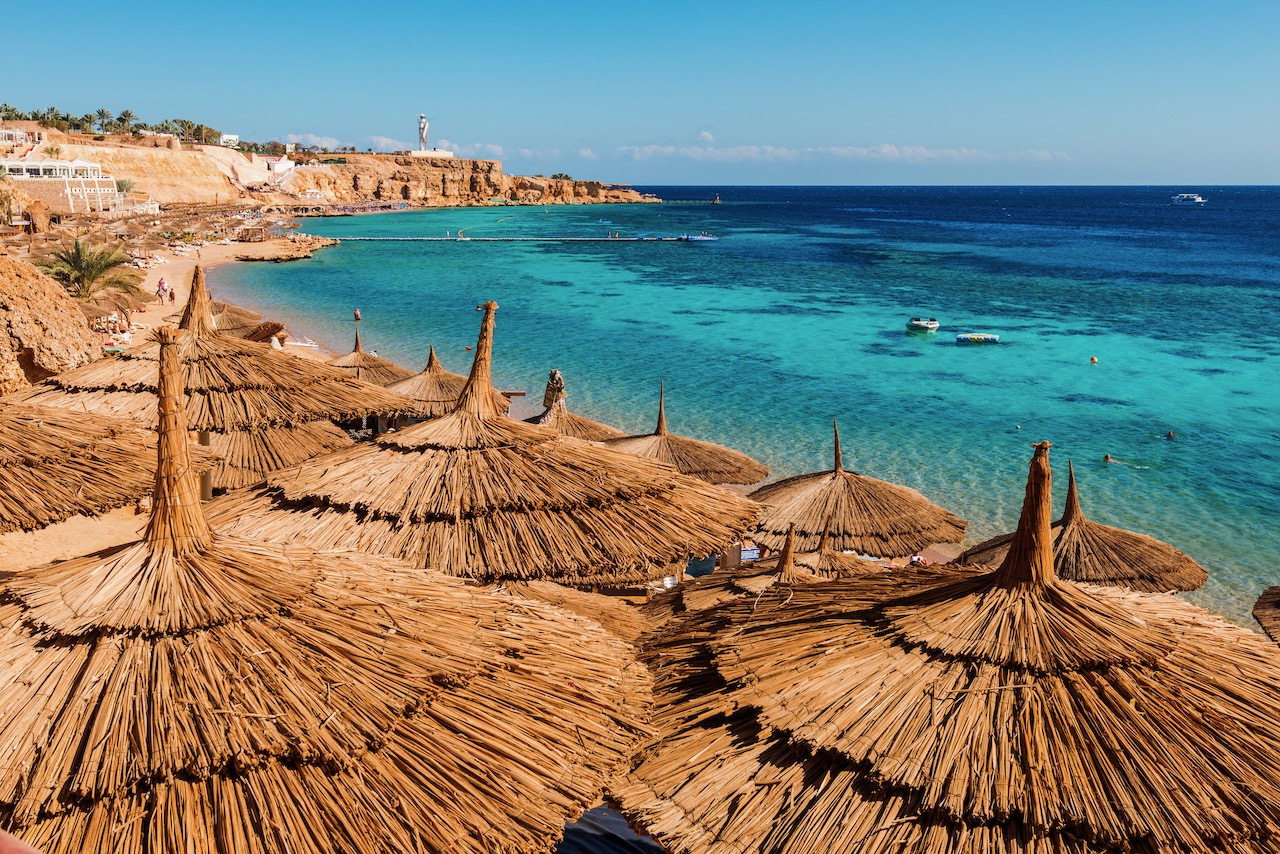
Entry to Egypt
If you’re looking to dive in Dahab and Sharm, entry into Egypt is fairly straightforward for the majority of nationalities. Upon arrival, most visitors can obtain either a 14-day stamp for Sinai (if landing in Sharm el-Sheikk, and remaining in Sharm el-Sheikh for their stay). Or, a USD $25 30-day visa sticker valid for the whole of Egypt. However, it is crucial to check official governmental entry requirements for your nationality prior to booking your trip.
Additionally, some countries offer an option to obtain an online eVisa. More information can be found here.

Why Here?
The reasons to dive in Dahab and Sharm are endless during the winter. The intensely hot summer has ended and the cool breeze comes in from the mountains. The water temperature remains around 23 to 24 degrees Celsius (73 to 75 degrees Fahrenheit). Plus, it’s not too busy, so dive sites are generally less packed.
While Sinai may not be the most tropical escape in the winter season, the humidity is low, the sun is high and the water is just right for beginners and hardcore divers alike. Living somewhere like this has undoubtedly helped me keep sane over the events around the globe in the last few years.
I may be biassed after calling Sinai home for the last six years, but it has everything: beginner shore dives, lively reef walls, deep adventures, unbelievable wrecks, and plummeting canyons. It’s certainly my top choice for an easy-to-get-to escape from Europe.
Tempted To Jump Into the Red Sea?
The Red Sea, particularly Dahab and Sharm el Sheikh, is full of wonder! It’s a tranquil escape, full of pockets of peace and a welcoming sense of community both above and below the surface. Wherever you’re based in the world, we can all use an escape from daily life, and Sinai is just the place for that. If you’re planning to dive in Dahab and Sharm, excellent dive resorts and top-rated liveaboards are abundant here, as well as exciting dive packages available on PADI Travel. Keep an eye out as last-minute deals are often offered in this region, too.
You Might Also Like:
- The Top 15 Dive Sites in Egypt
- The 5 Best Scuba Diving Resorts in Egypt, Based on PADI Travel Reviews
- Thanks to Red Sea Marine Conservation, Egypt is a Top Diving Destination
This article was written by Cecily Russell, a British expat living in Dahab, Egypt.
